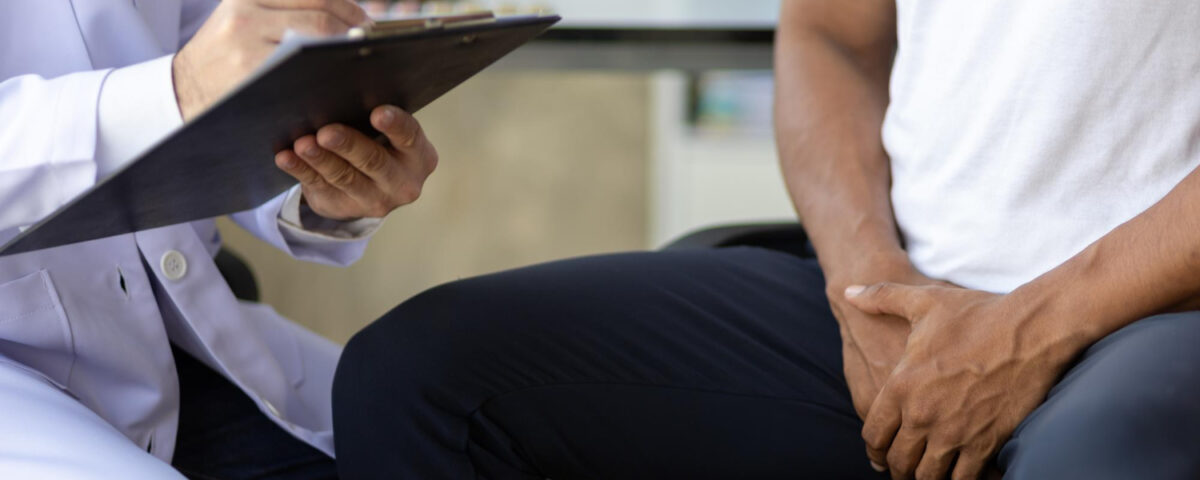The diagnosis of Peyronie’s disease brings with it a common and distressing question: Is Peyronie’s disease permanent? For many men, the sudden onset of abnormal penile curvature, pain during erection, and the formation of fibrous plaques is a severe blow to self-esteem and sexual well-being. The fear that this condition may be a lifelong sentence is one of the most common concerns. Prof. Fabio Castiglione, a urologist and andrologist specialized in penile conditions, has one mission: to offer clear answers and, most importantly, effective solutions. In this article, we’ll explore the complexity of Peyronie’s disease, dispel some myths, and highlight the most innovative treatments currently available—not only to manage symptoms but, in many cases, to significantly improve the condition.
Is Peyronie’s Disease permanent? A complete guide to the most advanced solutions
Peyronie’s disease, or induratio penis plastica, is a connective tissue disorder affecting the tunica albuginea, the sheath surrounding the corpora cavernosa of the penis. Its main feature is the formation of one or more fibrotic plaques, which reduce local elasticity of the tunica. As a result, during erection, the healthy part of the penis expands normally, while the scarred area remains rigid, leading to curvature, shortening, hourglass narrowing, or a combination of these.
Note: The exact causes are not yet fully understood, but it is believed that repeated microtrauma to the penis during sexual activity or other activities may trigger an abnormal inflammatory response in genetically predisposed individuals. This inflammation leads to excessive scarring, resulting in plaque formation.
The disease progresses in two main phases:
- Acute (inflammatory) phase: The initial stage, lasting between 6 and 18 months. Often marked by pain during erection (and sometimes even at rest), plaque development, and worsening curvature.
- Chronic (stable) phase: At this stage, inflammation subsides. Pain usually disappears, the plaque stabilizes, and the curvature stops progressing. This is the ideal phase to consider more definitive treatment options.
Can Peyronie’s Disease go away on its own?
One of the most frequently asked questions—and unfortunately, complete spontaneous healing is rare. Studies show that only a small percentage (around 10–15%) experience mild spontaneous improvement, mainly when the condition is very mild.
In most cases, the condition develops differently:
- About 40–50% of patients experience worsening if untreated.
- The other 40–50% see stabilization of the curvature, but it does not go away.
What happens if Peyronie’s disease is not treated? Ignoring it increases the risk of deformity progression, development or worsening of erectile dysfunction (present in over 50% of cases), and a devastating psychological impact, including performance anxiety, depression, and intimacy avoidance. So the real question is not whether Peyronie’s is permanent, but “what can I do to treat it effectively?”
Is Peyronie’s disease permanent? Discover how Prof. Fabio Castiglione can help restore your quality of life with advanced, personalized treatments. Book a consultation now by calling +447830398165.
Non-Surgical treatments: Prof. Castiglione’s Innovative Approach

Fortunately, there are numerous non-surgical treatments today that can make a big difference, especially if started early. Prof. Castiglione’s approach integrates the most promising therapies, personalized to the disease stage and patient needs.
The Fabio Protocol: PRP + Shockwave synergy to regenerate tissue
At the core of Prof. Castiglione’s non-invasive treatment is the Fabio Protocol, a strategic combination of regenerative therapies targeting the root cause of the disease. This protocol goes beyond symptom management by actively promoting healing of the damaged tissue.
- PRP (Platelet-Rich Plasma): This therapy harnesses the body’s own healing power. A small blood sample is centrifuged to isolate and concentrate platelets, rich in growth factors. The PRP is then injected directly into the Peyronie’s plaque. These growth factors stimulate new blood vessel formation, reduce inflammation, and remodel scar tissue, replacing it with healthier, more elastic tissue.
- Low-Intensity Shockwave Therapy (LiSWT): This non-invasive technology uses low-energy acoustic waves to deeply stimulate the tissue. Shockwaves work by breaking up calcifications within the plaque, enhancing blood flow and activating cellular repair mechanisms.
The combination of PRP and shockwaves (P-Shocks) creates a synergistic effect: shockwaves prepare the tissue to respond better, while PRP provides the biological “building blocks” for repair. This integrated approach, known as the Fabio Protocol, has proven highly effective in reducing curvature, improving erectile function, and relieving Peyronie’s-associated pain.
Penile stretching and traction devices
Alongside regenerative therapies, stretching exercises and penile traction devices are key components of treatment.
- Manual stretching: Daily exercises performed by the patient to gently stretch the penis in the opposite direction of the curvature.
- Traction devices (e.g., Restorex): These medical-grade devices apply controlled traction for several hours daily. The goal is to stimulate the growth of healthy tissue and lengthen the shortened side, gradually straightening the penis. Used in combination with the Fabio Protocol, they can speed up and enhance results.
Is Peyronie’s disease permanent? Don’t let it limit your life. Trust Prof. Fabio Castiglione’s expertise for personalized and innovative care. Call now +447830398165 to book your consultation!
Medications and supplements: A supportive role

There’s no magic pill for Peyronie’s, but some oral medications or supplements may help, especially in the acute phase, to reduce inflammation and pain. However, their effect on curvature is limited and should always be discussed with a specialist. Intralesional injections with Verapamil or Collagenase (Xiapex) are an option, but carry limitations and potential side effects, which is why Prof. Castiglione prefers safer, more modern regenerative therapies.
The link with ledderhose disease
Interestingly, Peyronie’s is sometimes associated with other fibrotic conditions, such as Ledderhose disease (plantar fibromatosis) and Dupuytren’s contracture (affecting the hands). This correlation suggests a shared genetic predisposition to abnormal scar tissue formation. If you have one of these conditions, early andrological assessment is even more important at the first sign of penile symptoms.
When is surgery the best option?
If the curvature is severe, preventing penetration and unresponsive to conservative therapies, surgery may become the definitive solution. There are several techniques:
- Plication (e.g., Nesbit procedure): Shortens the long side of the penis to straighten it. Effective, but results in some loss of length.
- Plaque incision/excision with grafting: Involves cutting or removing the plaque and covering the area with a graft (biological or synthetic). Preserves length but has a higher risk of erectile dysfunction.
- Penile implant: In cases where Peyronie’s is accompanied by severe erectile dysfunction, a penile implant solves both issues simultaneously, restoring straightness and rigidity.
Surgical choice depends on curvature degree, penile length, erectile function, and patient expectations.
The importance of early diagnosis and personalized care
The answer to the original question largely depends on when and how treatment begins. Early diagnosis, using dynamic penile ultrasound, is the first crucial step. This test measures curvature, evaluates plaque structure, and assesses blood flow. Based on this, Prof. Castiglione can develop a tailored treatment plan. There is no one-size-fits-all solution. For some, the Fabio Protocol will be ideal. Others may benefit from shockwaves plus traction. In more complex cases, surgery may remain necessary.
Frequently asked questions (FAQ)

Q: Do exercises for Peyronie’s disease really work?
A: Yes. Manual stretching and traction devices like Restorex are effective—especially when combined with regenerative therapies like the Fabio Protocol. They help remodel scar tissue and promote lengthening.
Q: Is treatment painful?
A: Non-invasive therapies like shockwaves and PRP injections are generally well tolerated. Shockwaves may cause slight tingling; PRP uses local anesthetic to minimize discomfort.
Q: How long until I see results?
A: Results vary. Some notice improvements after a few sessions, but tissue regeneration continues for months. Consistency and adherence to the treatment plan are key.
Conclusion
Back to our opening question: Is Peyronie’s disease permanent? The answer is no—it doesn’t have to be. While spontaneous recovery is rare, doing nothing is the worst choice. With modern non-surgical therapies and a personalized approach, it’s possible to reduce curvature, improve function, and regain confidence. Prof. Fabio Castiglione is a pioneer in regenerative Peyronie’s therapies. At his London clinics, you’ll find cutting-edge expertise and technology, along with a compassionate and patient-focused approach. Don’t let Peyronie’s define your life—call Prof. Castiglione today at +447830398165.


